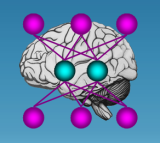CISB
Abstract: Artificial neural networks (ANN) are excellent biological-like models to simulate nervous system functions.
Their spontaneous biological likeness can be further enhanced by letting biological-like procedures, such as
evolutionary selection, shape the investigated ANN models. This makes the investigator duties shift from
designing the networks to designing the environment where the networks behave, so reducing the impact by
possible investigator preconceptions on the models. In this paper we present a few examples about modeling
nervous system functions with ANN subjected to evolutionary selection by genetic algorithms. This
methodology, called Evolutionary Connectionism, proved feasible and profitable in studying both
sensorimotor and cognitive nervous functions through simulation.
Accornero_Capozza_CISB_2014.pdf
Documento Adobe Acrobat [1.9 MB]


